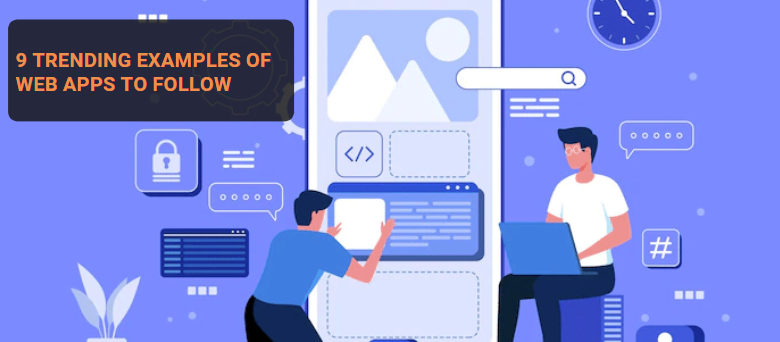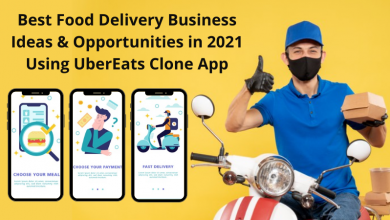9 Best Examples of Progressive Web Apps in 2022

No one can deny the importance of performance in any online business. As a result, a new standard known as Progressive Web Apps (PWAs) is being adopted by websites across a wide range of businesses. The front-end technology, supported by Google, seeks to give a high degree of performance independent of the device or network situation. Enhancing PWAs with features that are dependable, quick, and entertaining is how they accomplish this goal. Most people are unfamiliar with PWAs (Progressive Web Apps Examples), despite the fact that they’ve been garnering a lot of attention recently.
The simplest approach to learning how a PWA differs from a traditional responsive website is to look at some excellent examples of PWAs. List of Progressive Web App examples from various sectors so you may get a feel for the latest web technology first-hand.
Examples of Progressive Web Apps that will have an impact in the year 2022
For this reason, PWAs are a threat to native frameworks, since consumers don’t want to waste time or space downloading and installing an app. The mobile-friendly website will still be used if it functions properly. Studies reveal that progressive web applications outperform their native equivalents in a variety of scenarios.
1. Starbucks
Starbucks created a PWA for their web ordering system, which provides a comparable experience to their current native app, with the goal of making it accessible and user-friendly for all of their consumers. If you don’t have access to the internet, you may still use the Starbucks PWA to explore the menu, personalize your order, and add products to your shopping basket. Once they’re logged in, they’ll be able to see local prices and place their order for food and beverages.
Progressive Web Apps are ideal for clients that often lose or re-establish access during the day, as well as for growing markets like rural areas where connectivity is less dependable. This new ordering PWA from Starbucks is already having an impact. Given that Starbucks’ present iOS app is 99.84 percent smaller than its online counterpart, the web app has quickly become a favorite among consumers. As a consequence, the number of online users who make orders each day has increased, with desktop users placing purchases at a pace that is about equal to the rate of mobile users placing orders.
2. Debenhams
Debenham is a must-mention when discussing fashion retailers that are redefining the customer experience. In spite of the fact that their former website had seen a surge in traffic from mobile devices, the company’s mobile conversion rate was not increasing. As a result, they felt that it was time for a digital transformation, or else their digital and overall development would be slowed down shortly. Users, particularly those on mobile devices, were front of mind as the company searched for a solution.
The team at Debenhams found that PWA was the best solution. All of their hard work paid off once they made the switch to progressive web app ideas (PWA). In order to better serve their customers, they’ve removed roadblocks like sluggish websites, a confusing layout, and a time-consuming checkout procedure. Mobile sales grew by 40% and conversion rates rose by 20% for Debenhams during the last year.
3. BMW
Whether it’s through their automobiles or their website, BMW shows that they aren’t afraid to embrace new technology as a pioneering brand in the automotive sector. By providing high-quality and entertaining content, the brand hoped to enhance the consumer experience.
A ‘wow’ experience awaits users of the new BMW PWA. High-resolution photos and videos are immediately noticeable, and the web loads very rapidly with all of these capabilities (4X times faster than the old site). Following the formation of the PWA, its reports also indicated the following astounding figures: There was a four-fold rise in visitors to a BMW sales site, a 50% increase in mobile users, and a 49% increase in visitors to the site overall.
4. Flipboard
Flipboard is the world’s most popular social magazine, allowing users to stay up to date on all the subjects, news, and events they care about. An online magazine format pulls together news and articles from all around the globe, based on the interests of the user. It is possible for Flipboard users to follow their favorite sources and store news, photographs, and videos into their own Flipboard magazines for later reading or sharing with others.
When it comes to Progressive Web Apps for online news, Flipboard is an excellent example. The PWA reduces data consumption to give a clean, quick, and elegant browsing experience. Flipboard was once a mobile app that could only be accessed through a mobile device until it released its PWA. Flipboard can now give a comparable experience to their native app on the web, making it accessible to desktop users as well, thanks to the PWA.
5. Soundslice
Musicians may study and practice their craft with Soundslice, a web-based music instruction program. PWA is used by the firm to provide the best music creation and education experience. With a unique music player, the PWA-based program makes it simpler and more efficient for self-taught musicians to study a piece of music Using the Soundslice player, users may read and hear a piece of music on any device, whether it’s a phone or a desktop computer. In addition, instructors of music may use the application to develop interactive music classes. Soundslice features a marketplace where you may buy courses and transcriptions for learning from recordings.
6. Twenty-Four
In 2014, the puzzle game 2048 was made available as a free download for iOS and Android devices. In less than a week after its debut, it had amassed a following of more than 4 million people. The game is easy to learn yet hard to put down once you get started. Aiming to join blocks with the same numbers in order to reach a final total of 2048, this game has been dubbed “Candy Crush for math nerds”. Using the official PWA version of 2048game.com, players may access the game at any time from any browser. It’s impossible to tell the PWA from its native app version because of its seamless transitions and full-screen display. In addition, the 2048 PWA may be played in its entirety even while not connected to the internet.
7. Makemytrip
MakeMyTrip.com is an excellent PWA example. About eight million people visit India’s top travel company’s website every month, with mobile traffic accounting for two-thirds of those visits. MakeMyTrip designed a PWA to provide a quick, dependable, and polished mobile-web experience for its consumers since mobile booking has become the primary method of booking. By decreasing website load times by 38 percent, the new PWA experience has quadrupled its conversion rate. Users spent 160% more time on MakeMyTrip’s new mobile site than they did on their old one, and the site’s bounce rate dropped 20% as a result of this.
8. Uber
The Uber site was designed from start as a PWA to give a similar booking experience to the native mobile app as the firm expanded into new territories. In order to make vehicle booking possible on 2G networks, the Uber PWA was created. For those with low-end smartphones that aren’t compatible with the Uber app, the PWA is a wonderful alternative.
Uber has made it possible to request a trip quickly no matter where you are, how fast your network is, or what device you’re using. Load time on 2G networks is only three seconds because of the small size of the app’s core.
9. Kopa
Kopa is a portal that helps students and landlords locate reliable lodging for school periods and internships. Although there are already 9000 schools on the network, there are more than 100 listings on its PWA. Students may save time by using certified landlords and listing reviews. Students may use the results page to get directions to their place of employment after they’ve entered their work address. Scholars may also use the online app to identify co-workers nearby or to see where their peers are working on co-op.
12 Best Profitable Mobile Apps Ideas for Entrepreneurs to Invest in 2022
Is PWA development worth your time and money?
Are you familiar with Eric Ries’s lean startup methodology, which was first announced in 2011? Your team may test conversions before a native app project consumes a year’s worth of resources by using a progressive web app. A look at the case studies shows that consumers just want the software’s features without having to waste time installing it. Clients that opt to invest in a PWA are more likely to:
- Want to make use of their current SEO position to attract new customers.
- There’s no requirement for in-depth native app capabilities.
- Will go to whatever lengths to avoid paying a 30% fee to the app store.
- Do not have much money to spend on mobile development projects.
Without a proper strategy, PWA development might consume a significant amount of time and money. However, the project’s success is one step closer when a respected software business is a partner or when you hire dedicated developers. Over the course of the last decade, we’ve worked with more than 170 different companies on important digital initiatives. To get started on a PWA for yourself, send us an email with your idea and we’ll help you organize the launch of a high-performing app.




